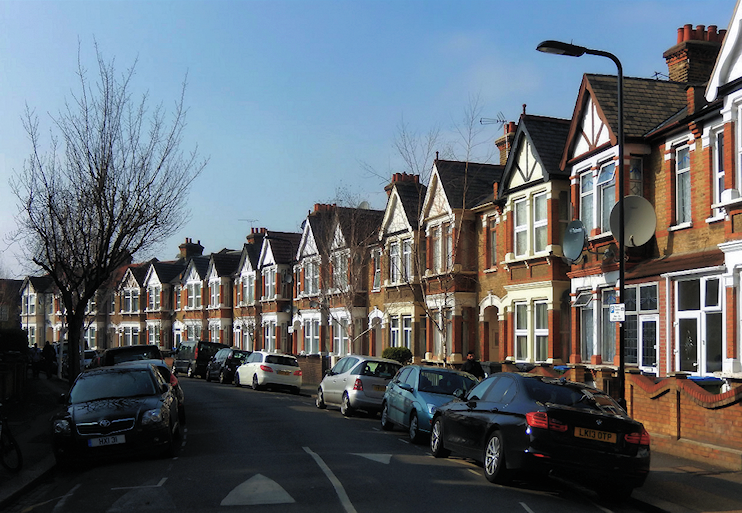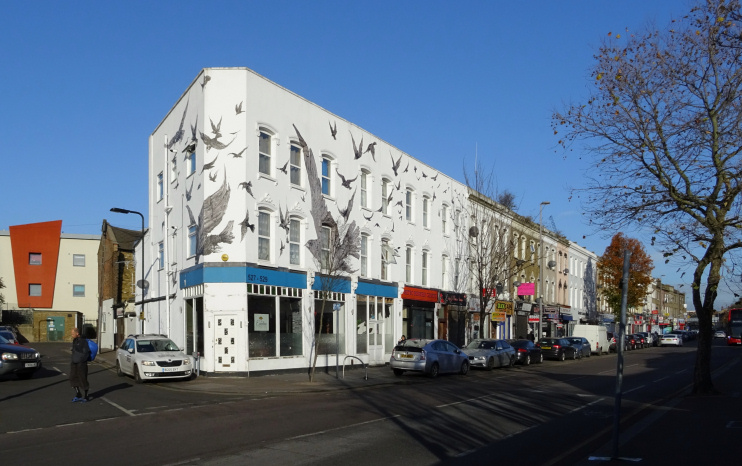Leytonstone
Leytonstone, Waltham Forest
A Victorian suburb situated between Wanstead and Leyton

Leytonstone takes its name from an old milestone that is now topped by a 19th-century Portland stone obelisk known as the ‘high stone’. It stands at the junction of New Wanstead and Hollybush Hill – and finds itself just inside the borough of Redbridge owing to boundary changes.
The village evolved early as a roadside halt. A Rose Inn was in existence in 1585 and Leytonstone High Road was more important than Leyton’s High Road by the end of the 16th century. A few large houses were built from the late 17th century – including the Pastures, now replaced by a youth centre – but Leytonstone did not gain as fashionable a reputation as its neighbour.
Leytonstone House, built around 1800, is the oldest surviving mansion. It successively served as a brewer’s residence, a school and a hospital and has now been converted to offices in the grounds of a Tesco superstore. William Cotton of nearby Wallwood House gave money for the building of the church of St John the Baptist in the early 1830s and Leytonstone became a separate parish in 1845.
This was still primarily a farming village when the first station opened in 1856 and it remained quiet for a further two decades. The Cotton family gave the site for St Andrew’s church when their estate was developed with substantial suburban houses from the mid-1870s.
Nearer Stratford, the district was rapidly built up with two-storey yellow-brick terraced houses in the 1880s, providing affordable accommodation (and season tickets) for city clerks.

Changes to Leytonstone’s built environment in modern times have mostly been limited to the replacement of groups of Victorian houses with small blocks of flats – plus the construction of the M11 link road (now called the A12) at the end of the 20th century. Anti-road activists established a protest camp – or ‘autonomous republic’ called Leytonstonia – in February 1994, centred on a squatted house in Fillebrook Road and on wood-framed shelters set up in a grove of nearby trees. The metropolitan authorities invaded and crushed Leytonstonia on 13 June 1994.
After the link road had been forced through, the affected surroundings were ‘re-greened’ and sprinkled with mosaics, sculptures and other installations, including Lodewyk Pretor’s Time Terminus (1999).
In 2001 a group of artists set up a delightful community cultural venue called the 491 Gallery, which survived until 2013.
Despite the outward similarities of their convergent housing, Leytonstone and Leyton are demographically disparate. Leytonstone has fewer households with children, fewer residents of African, Caribbean or Pakistani descent and a higher proportion of owner-occupied properties.
The Leytonstone Festival has been held every July since 1995 and brings together a series of arts events at several venues.
Alfred Hitchcock was born in Leytonstone in 1899. His parents ran a modest grocery store in the High Road, on a site subsequently occupied by a petrol station. Hitchcock’s films are celebrated in a gallery of mosaics in the pedestrian underpass leading to Leytonstone tube station, and in The Birds mural shown above.*
Other local notables include the actor Sir Derek Jacobi, cricketer Graham Gooch, footballer David Beckham, broadcaster Jonathan Ross and musician Damon Albarn.
Postal district: E11
Population: 12,879 (2011 census)
Stations: London Overground (Leytonstone High Road, zone 3) and Central line (Leytonstone, zones 3 and 4)
Further reading: Alan Simpson, Leyton and Leytonstone: Past and Present, The History Press, 2009
